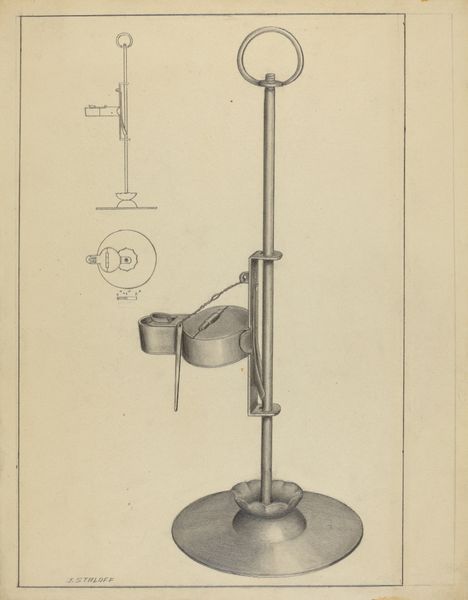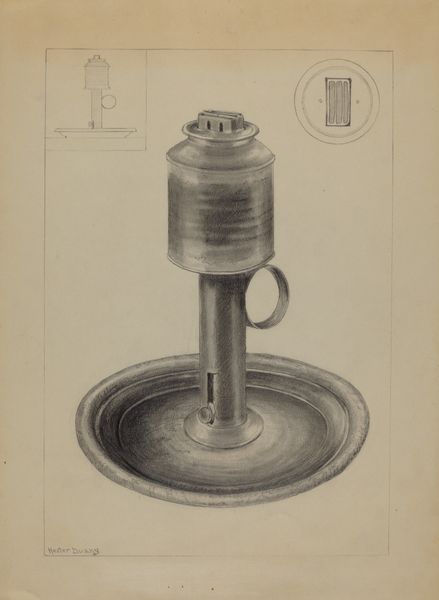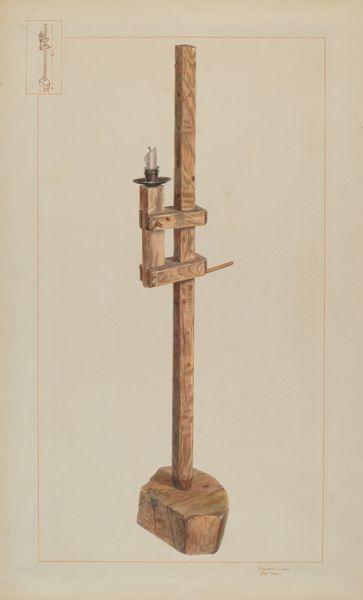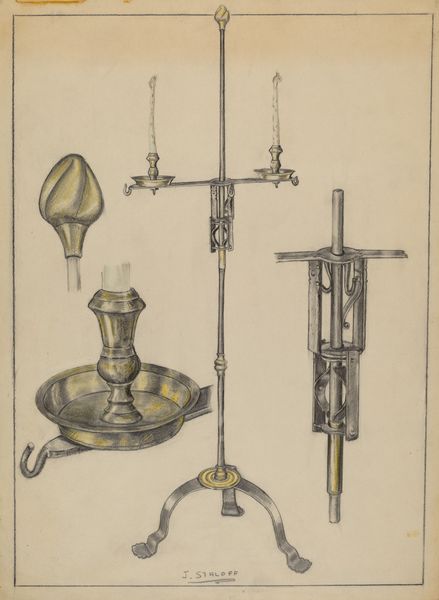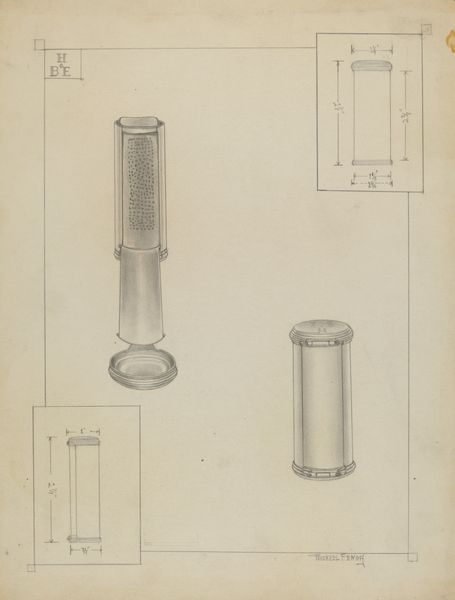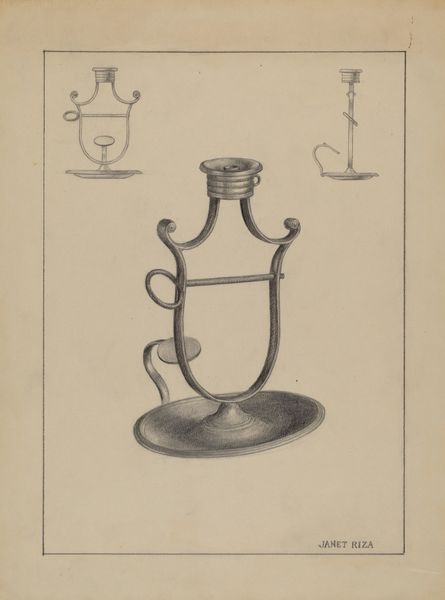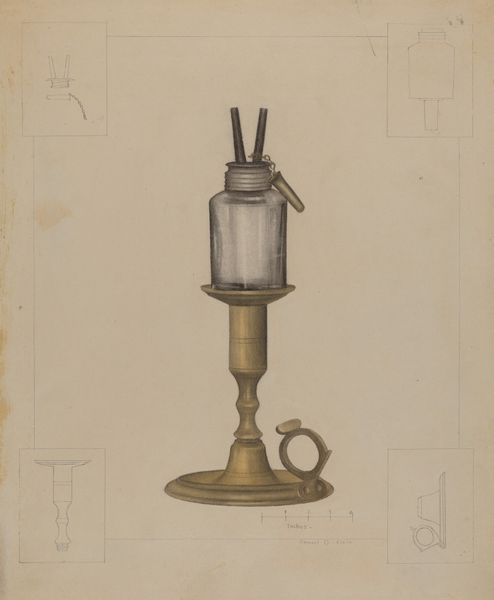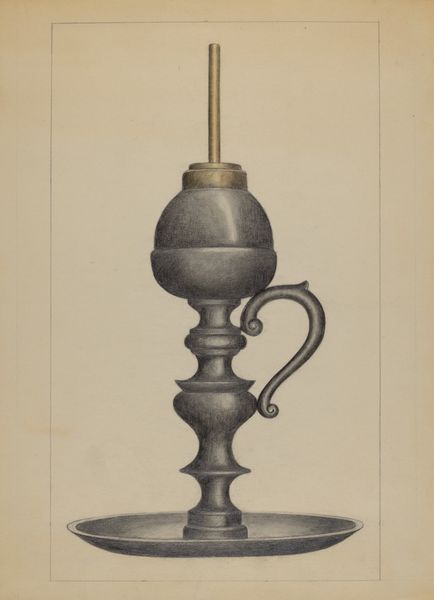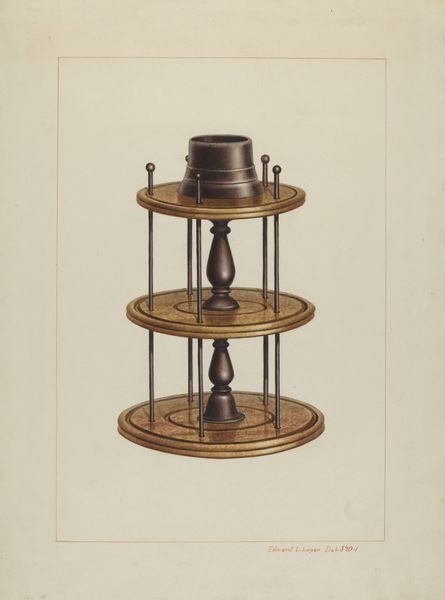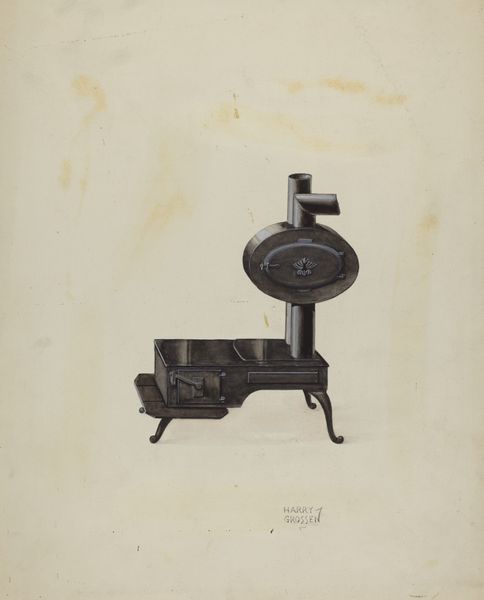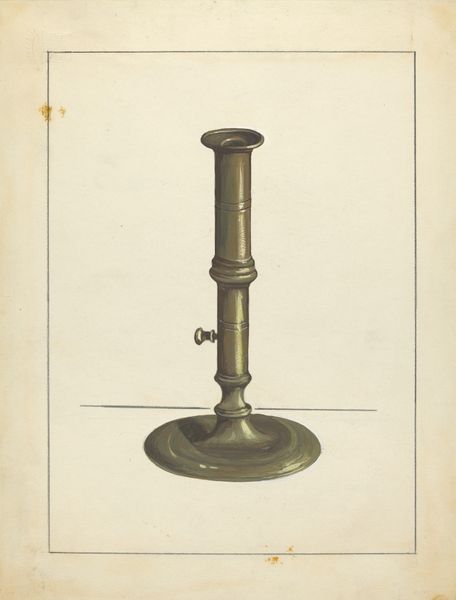
drawing, metal, pencil
#
drawing
#
metal
#
geometric
#
pencil
#
realism
Dimensions: overall: 30.6 x 23.3 cm (12 1/16 x 9 3/16 in.) Original IAD Object: 14" high; 7 1/2" wide
Copyright: National Gallery of Art: CC0 1.0
Curator: Immediately, I notice a subdued, almost melancholy mood about it, like a memory faded by time. Editor: That’s interesting. Here we have Gerald Bernhardt’s rendering from around 1936 titled "Candle Holder," a detailed pencil drawing that captures a rather elaborate metal object. It is remarkable how light and shadow convey a sculptural dimensionality. Curator: The choice of a candle holder, though...light against darkness is an age-old dichotomy. It speaks of hope, perhaps in a period where it was scarce, crafted as it is amidst pre-war anxieties, I'd imagine. Editor: Well, let’s break down the visual language. Look at the geometric rigidity combined with fluid curves. There's the circular base contrasting with the upright pillar and the flamboyant swirls supporting the candle itself. It suggests a carefully structured elegance. Curator: I wonder if that structure offers comfort or suggests restraint. The candle is elevated, yes, but contained. Is this illumination readily available, or only for those who can navigate its rather complex presentation? I think of rituals and carefully tended symbols. Editor: True, but the drawing is impeccably detailed with soft graduations created by the pencil work to give a convincing rendering of metalwork and the play of light over it. And realism allows it to feel grounded. I’d even venture it suggests utility. Curator: Even in utility, there's symbolism, especially within the home. This isn’t just illumination; it’s hearth, gathering, memory. The artistry is about containing emotion in those objects. The candle holder as more than what it seems... Editor: Ultimately, though, the composition gives equal emphasis to the practical and expressive forms; it is this tension which defines its character. Curator: So perhaps Bernhardt’s candelabra offers not just light but a kind of visual prayer—a quiet resistance in an object both beautiful and quotidian. Editor: Precisely; it's the artful balance between form and the object it reflects. A drawing that yields far more upon closer inspection.
Comments
No comments
Be the first to comment and join the conversation on the ultimate creative platform.
